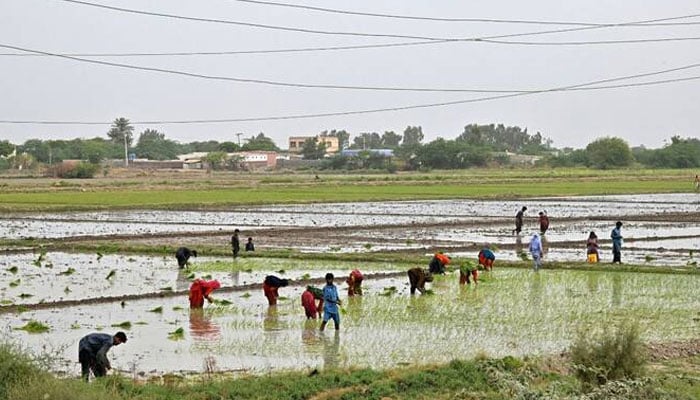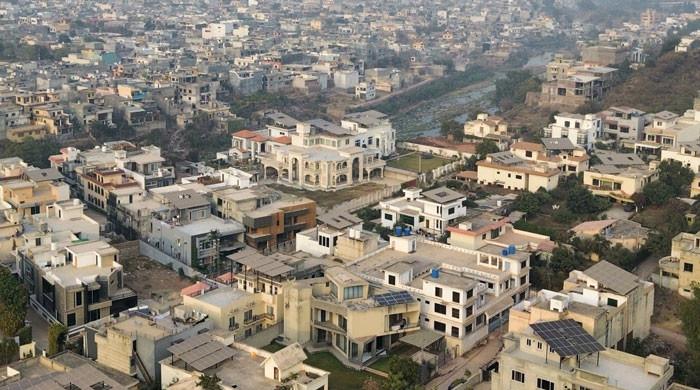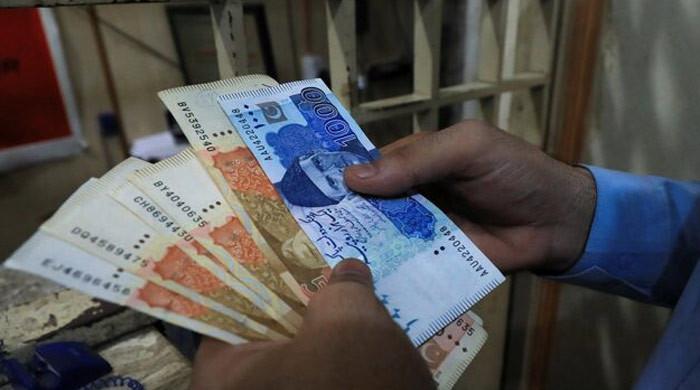Digital agricultural census shows 17,000 farmers owning 100 acres or more
Report shows significant decline in rain-fed (Barani) agriculture; Punjab leads in livestock numbers
August 07, 2025

- Pakistan's total cultivated area stands at 52.8m acres.
- Average farm size drops from 6.4 acres in 2010 to 5.1 acres.
- 19.8m households associated with agriculture in country.
ISLAMABAD: Pakistan’s first Digital Agriculture Census revealed that about 17,000 farm owners having a size of 100 acres and above own 3.65 million acres of land, amounting to 6% land holdings in the country, The News reported on Thursday.
Pakistan's total cultivated area now stands at 52.8 million acres, 20% of farm holdings possess a size of land between 7.5 acres to 12.5 acres, owning 10.6 million acres. There are more than 251 million livestock animals spread across the provinces.
Over the past 14 years, the cultivable area has expanded by 10.2 million acres, while the share of non-irrigated farmland has shrunk from 8.4 million acres in 2010 to 4.9 million acres in 2024
According to the Agricultural Census 2024 launched by the Pakistan Bureau of Statistics (PBS) here on Wednesday, the number of farms in the country has increased from 8.26 million in 2010 to 11.7 million in 2024.
The average farm size, however, has decreased due to population growth, dropping from 6.4 acres in 2010 to 5.1 acres. The report also reveals that 19.8 million households in Pakistan are associated with agriculture.
The census found that the highest concentration of agricultural land lies in Punjab, where 5.05 million farms cover over 31 million acres. In Khyber Pakhtunkhwa, 4.17 million farms account for 8.83 million acres, while Sindh’s 1.82 million farms cover 9.19 million acres. Balochistan's 633,000 farms span 8.83 million acres, and Islamabad’s 17,000 farms account for a relatively minor portion.
The census presents a detailed breakdown of landholding patterns. There are 1.29 million farms of less than one acre, 4.04 million farms of up to 2.5 acres, 2.24 million farms of up to 5 acres, and over a million farms up to 7.5 acres. Larger farms include 783,000 with 12.5 acres, 357,000 with 25 acres, 99,000 with 50 acres, and 33,000 farms owning 100 acres or more.
Speaking at the launch of the census, Federal Minister for Planning Ahsan Iqbal said that these figures are vital for future economic planning. He emphasised that Pakistan's per-acre yield lags significantly behind global standards and that corporate farming is now essential for boosting productivity.
Highlighting the decline in cotton production from 15 million bales to 5 million bales, the minister noted that this drop is emblematic of broader inefficiencies in the sector. He said the agriculture sector, which contributes 24% to GDP, must be strengthened to support Pakistan’s economic aspirations, including the goal of transforming the country into a $1 trillion economy.
The report shows a significant decline in rain-fed (Barani) agriculture, despite the existence of canal systems, tube wells, and water pumps. The area dependent solely on rainfall has dropped from 8.4 million acres in 2010 to just 4.9 million acres in 2024, underscoring the need for improved irrigation infrastructure.
The census also shed light on the scale of livestock in Pakistan. There are 55.8 million cows, 47.7 million buffaloes, 44.5 million sheep, and 95.8 million goats. Additionally, the country is home to 1.5 million camels, 553,000 horses, 296,000 mules and 4.9 million donkeys.
Punjab leads in livestock numbers with 26.9 million cows, 29.5 million buffaloes, 13.3 million sheep, and 31.3 million goats. Sindh has over 11.2 million cows, 13.4 million buffaloes, 4.7 million sheep, and 19 million goats. Khyber Pakhtunkhwa is home to 13.5 million cows, 3.9 million buffaloes, 7.6 million sheep, and 22.4 million goats, while Balochistan hosts 4.07 million cows, 664,000 buffaloes, 18.8 million sheep and 22.8 million goats.
Even Islamabad has a recorded livestock population, with over 1 million cows, 120,000 buffaloes, 5,000 sheep, and 127,000 goats.
Interestingly, the census data contradicts some figures published in the Economic Survey for the last fiscal year, highlighting discrepancies in official statistics and the urgent need for standardised, accurate, and technology-backed data collection in the country.









